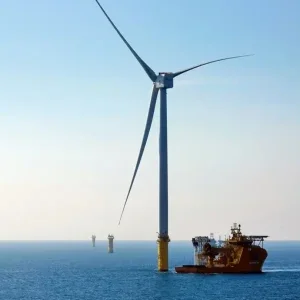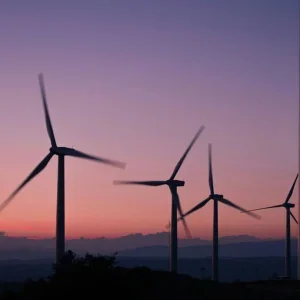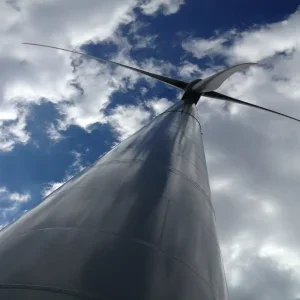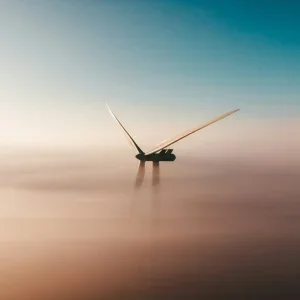What is the best way to maximise the efficiency of aging wind farms? Retrofit, repower or improve maintenance? We find out from Christian Jourdain, services marketing director at Spanish wind turbine manufacturer Gamesa, the company’s approach to getting the most out of early turbine models and how it has been influenced by matters beyond its control.
One might think from reading certain newspapers that wind turbines are a futuristic menace, static stormtroopers intent on pastoral destruction. In truth, many turbines currently in operation have been standing for more than two decades; their presence as unremarked-upon as bare hillside would once have been. The scores of tax-credit-driven turbines that popped up on the hills of California in the early 1990s, their German and Danish counterparts, with what was at the time innovative direct drive generator technology – they are reaching the end of their useful lives and need to be dealt with.
The problem posed by aging turbines is, in certain markets, a potentially serious one. In Germany, around 7,000 of the 25,000 operational turbines will have completed more than 15 years of operation by the end of 2015, with 20-25 years the average lifespan. The problems of the US are less immediate but could one day be serious. Though only around 1.2% of turbines are currently older than 15 years, by 2020 65% of the entire fleet – or around 30,000 individual units – will have been running for more than ten years.
Thankfully, today, there are a number of options beyond decommissioning, an expensive, often bureaucratic procedure that many would rather avoid. But knowing which method to employ is more complicated than ever. In the 20-25 years that a wind farm is in operation, the world around it changes considerably. The regulatory environment that made a wind farm a good idea in 1995 might not be in place anymore. Perhaps the location of a turbine has been revealed by more advanced micro-siting models to be less than optimum? Or maybe the damage caused by the blades to nesting birds has led to tighter operational parameters?
"Each wind farm is different," says Christian Jourdain, services marketing director at Spanish wind turbine manufacturer Gamesa. "For example, maybe your turbine has a low capacity factor, say, 20%. If you have a very low capacity factor there is a strong interest to repower because turbines now are more efficient. It depends on the profile, access to financing, performance of the turbine, state of the turbine, local and regulatory constraints… Then people have to make a decision and that’s never easy."
Overriding consideration
In Gamesa’s home market, this decision has been dominated in the past year by the question of regulation. In June 2014, the Spanish Government passed a law that rocked the country’s renewable energy industry – it scrapped the existing renewables subsidy system, which often resulted in double-digit returns for wind farm owners, and replaced it with an earnings cap of 7.5%. This law did not just apply to new renewables projects but all of those in operation.
The blow was even heavier for older turbines. Those that came online before 2005, which account for 8.4GW of power generation, were stripped of all subsidy and forced to sell their output at market rate. Projects that started under the understanding that the subsidy regime would last 20 years found themselves suddenly facing greatly reduced returns or even bankruptcy.
Some might say that the cutting of subsidies was inevitable eventually – the deficit created by renewables incentives stood at €26 million at the end of 2013, a level that the government frequently claimed to be unsustainable. It was the perceived lack of consultation that most angered the country’s wind and solar industries with Luis Polo, director general of national wind association AEE, describing the decision as "unfair" and "incomprehensible".
Take care of the cents
The government’s decision undoubtedly had an effect on how wind farm owners thought about their aging turbines. With future returns drastically reduced, the idea of repowering (replacing existing turbines with newer or larger models) became prohibitively expensive for many and life extension became an increasingly popular option. Not only is it cheaper for the customer than repowering or decommissioning but it meant that owners just had to renegotiate their loans on the existing asset rather than risk failing to secure financing on a new one.
Life extension is heavily focused around better monitoring and analysis. At the heart of it is reliability-centred maintenance (RCM), long used in other industries such as conventional and nuclear power, but finally making headway in wind. RCM analyses the condition of each individual component of a wind turbine, collects data on its most common modes of failure at different points in its life cycle and models the impact these failures are likely to have on a whole system. This data helps tailor turbine-specific maintenance programmes that include predictive as well as reactive measures and means that offending parts can be removed without the need for mass overhaul.
Through a combination of monitoring and structural upgrades, the life extension treatment can add an additional ten years to a turbine’s life while greatly reducing the financial risk borne by the customer; the service comes with an operation and maintenance contract that stipulates a fixed cost over the ten years, ensuring no nasty surprises.
"When we have to adapt to new regulation, what is important is the capacity of the original manufacturer to be able to propose new solutions to the owners," Jourdain says. "The good thing is that Gamesa was working continuously on process improvement and technology improvement so [this regulatory change] came at the right time for us to support them. When you have a significant reduction of your revenues, each euro is important."
Performance review
In tandem with life extension, Gamesa had to find ways of squeezing the best possible performance out of its customers’ existing aging turbines. It introduced Energy Thrust, a proprietary software that analyses the performance of individual turbines rather than just the average of the whole group. Energy Thrust continually monitors and calibrates the set-up of each turbine, increasing the overall output of the wind farm by up to 5%. This product is offered through a financial arrangement that sees Gamesa take the initial risk. The wind farm operator pays no upfront cost – if output doesn’t improve, the customer pays nothing, if it does, Gamesa takes a percentage of the increase in profits.
"Up to that point people in the industry would say, ‘If you want this product, you pay the price. The price is this, you either like it you don’t like it, you make your business case and that’s that,’" Jourdain explains. "Many customers in Spain were facing very difficult times because of the importance of the change and the retroactive aspect of things so with Energy Thrust, we tried a different way of doing things – customer partnership. This is a risk-free investment that can provide up to 5% more productivity, which is huge from this perspective [that of an aging turbine]."
To further cut costs, the Spanish turbine manufacturer has incorporated price prediction software into its overall operating system. This software uses very detailed weather forecasting models to predict the likely output of a wind turbine and in turn the likely cost of the electricity it will produce. This means that downtime and maintenance can be scheduled at a time that will cause as little revenue loss as possible.
Such measures are beneficial to Gamesa’s customers but they are also important, in Jourdain’s view, to combat outdated assumptions about the unreliability of wind energy. Whatever external factors come into play, the wind industry has to be more innovative and continually demonstrate its worth in a way that traditional power producing industries do not. This is despite the fact that in winter, wind energy now makes up as much as 60% of Spain’s energy generation, fitting in seamlessly with traditional forms of generation.
"The fact is in renewables, especially in wind, the market told us ‘you are unpredictable’," Jourdain says. "So we built weather prediction forecast tools and we were able to integrate all these systems to be as close to reality as possible. Now if someone mentions the wind changing we can say, ‘yes, it’s a fact that this happens, but it’s not a problem’. Because we know what a turbine will produce in the next day, the next 15 minutes… But anyway, it’s very exciting to work in the wind industry for this. It’s inventive, we have challenges and we overcome them."
With this in mind, Jourdain is philosophical about the strain the government’s decision placed on Gamesa’s business and on its customers, particularly those with aging turbines. That said, he fears that Spain could be seen as the "laboratory of Europe" and that other governments might follow suit if they see that the effects of subsidy removal were less damaging than feared. Gamesa operates wind farms in Italy, Poland and Sweden and provides equipment in many other parts of the continent.
"I hope this will not be an example for other countries," Jourdain says with a hint of trepidation.






